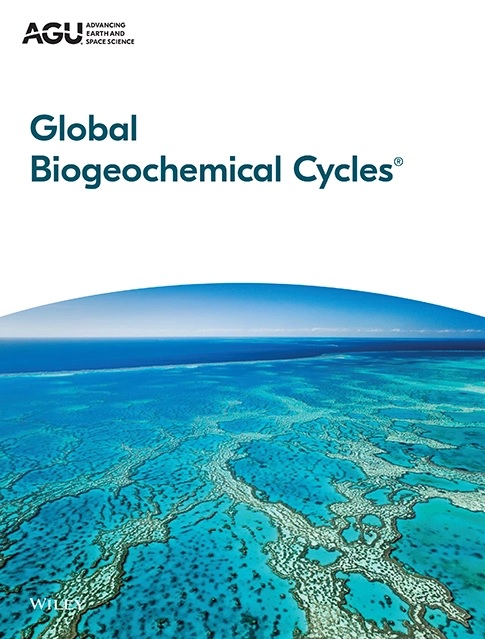Ver ítem
- xmlui.general.dspace_homeCentros Regionales y EEAsCentro Regional Patagonia NorteEEA BarilocheArtículos científicosxmlui.ArtifactBrowser.ItemViewer.trail
- Inicio
- Centros Regionales y EEAs
- Centro Regional Patagonia Norte
- EEA Bariloche
- Artículos científicos
- Ver ítem
Latitude, Elevation, and Mean Annual Temperature Predict Peat Organic Matter Chemistry at a Global Scale
Resumen
Peatlands contain a significant fraction of global soil carbon, but how these reservoirs will respond to the changing climate is still relatively unknown. A global picture of the variations in peat organic matter chemistry will aid our ability to gauge peatland soil response to climate. The goal of this research is to test the hypotheses that (a) peat carbohydrate content, an indicator of soil organic matter reactivity, will increase with latitude and
[ver mas...]
Peatlands contain a significant fraction of global soil carbon, but how these reservoirs will respond to the changing climate is still relatively unknown. A global picture of the variations in peat organic matter chemistry will aid our ability to gauge peatland soil response to climate. The goal of this research is to test the hypotheses that (a) peat carbohydrate content, an indicator of soil organic matter reactivity, will increase with latitude and decrease with mean annual temperatures, (b) while peat aromatic content, an indicator of recalcitrance, will vary inversely, and (c) elevation will have a similar effect to latitude. We used Fourier Transform Infrared Spectroscopy to examine variations in the organic matter functional groups of 1034 peat samples collected from 10 to 20, 30–40,
and 60–70 cm depths at 165 individual sites across a latitudinal gradient of 79°N–65°S and from elevations of 0–4,773 m. Carbohydrate contents of high latitude peat were significantly greater than peat originating near the equator, while aromatic content showed the opposite trend. For peat from similar latitudes but different elevations, the carbohydrate content was greater and aromatic content was lower at higher elevations. Higher carbohydrate content at higher latitudes indicates a greater potential for mineralization, whereas the chemical composition of low latitude peat is consistent with their apparent relative stability in the face of warmer temperatures. The combination of low carbohydrates and high aromatics at warmer locations near the equator suggests the mineralization of high latitude peat until reaching recalcitrance under a new temperature regime.
[Cerrar]

Autor
Verbeke, Brittany A.;
Lamit, Louis J.;
Lilleskov, Erik A.;
Hodgkins, Suzanne B.;
Basiliko, Nathan;
Kane, Evan S.;
Andersen, Roxane;
Artz, Rebekka R. E.;
Benavides, Juan Carlos;
Enriquez, Andrea Soledad;
Chanton, Jeffrey P.;
Fuente
Global Biogeochemical Cycles 36 (2) : 1-17 (2022)
Fecha
2022-02
Editorial
Wiley
ISSN
1944-9224
Formato
pdf
Tipo de documento
artículo
Palabras Claves
Derechos de acceso
Restringido
 Excepto donde se diga explicitamente, este item se publica bajo la siguiente descripción: Creative Commons Attribution-NonCommercial-ShareAlike 2.5 Unported (CC BY-NC-SA 2.5)
Excepto donde se diga explicitamente, este item se publica bajo la siguiente descripción: Creative Commons Attribution-NonCommercial-ShareAlike 2.5 Unported (CC BY-NC-SA 2.5)


